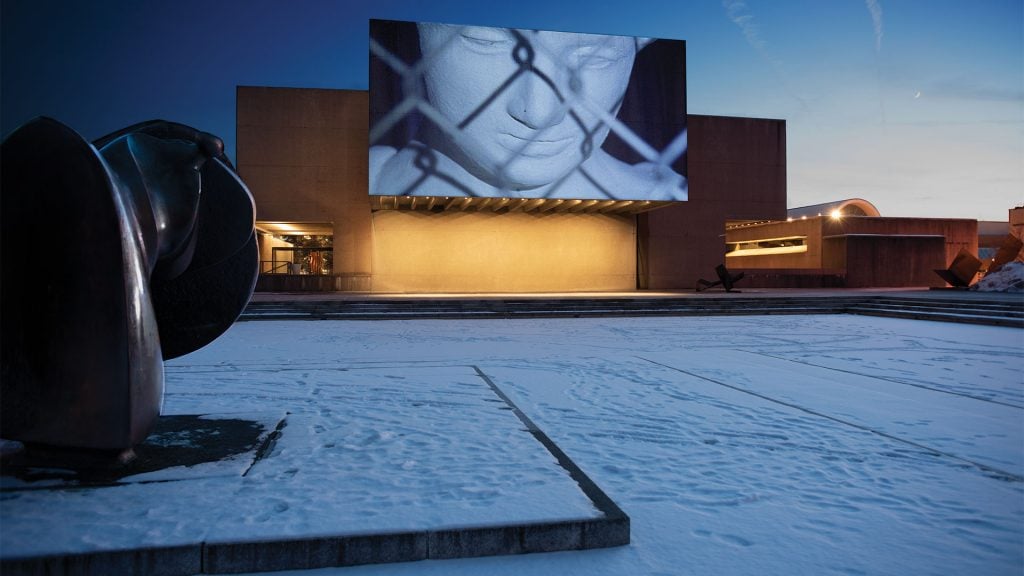As investigators probed allegations of mismanagement against nonprofit executive Jeffrey Hoone, he requested a private meeting with his board president, Lisa Goodlin.
The conversation, last September, came with 25 years of baggage. Goodlin began her relationship with Light Work, a well-regarded photography nonprofit affiliated with Syracuse University, in 1995 as an artist volunteering on exhibitions. She ended her tenure as the organization’s president in 2020 when she and several other board members realized that they had been rubber stamping incomplete financial statements from Hoone, which they claimed obscured his use of the nonprofit’s budget to pay for satellite radio, gas, and more than $300,000 in bonuses over the years.
In an interview with Artnet News, Goodlin said that the conversation exploded with yelling; Hoone was angry that anyone would consider his actions unethical. A month earlier, in August, she had released a statement to university leadership calling for the executive director’s resignation, which triggered the school’s investigation into his conduct. But nearly a year later, the director remained in place while nearly half of the board—and all of its women—left.
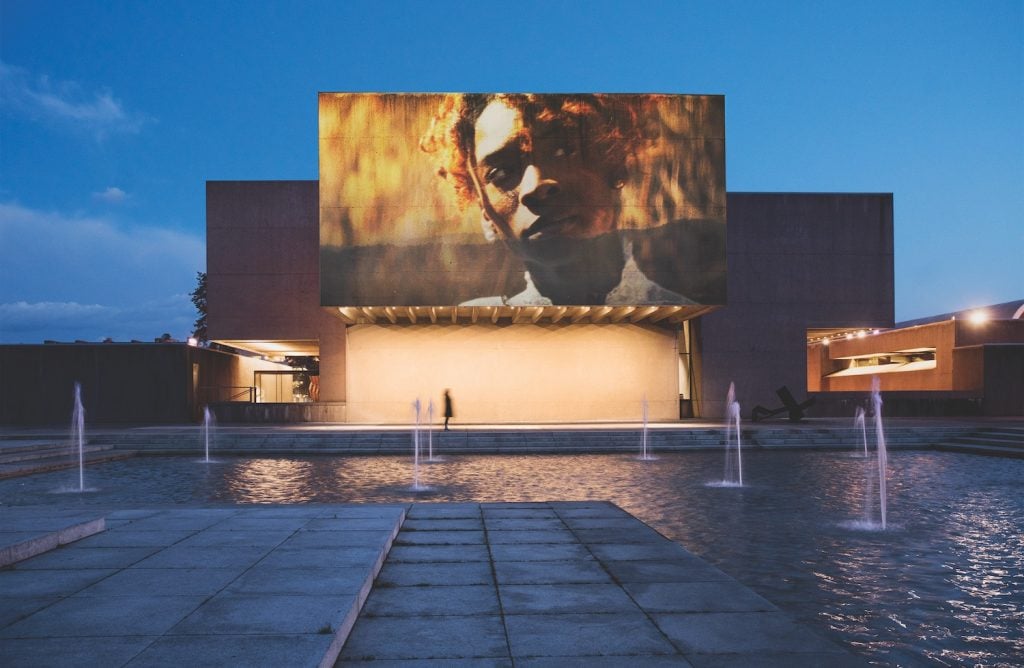
Installation view of “I Dream You Dream of Me” by Jennifer Reeder on Everson Museum facade. Courtesy of Light Work.
Hoone has denied any wrongdoing, telling Artnet News in a phone call on Tuesday that the university’s investigations found “no actionable items” that would trigger his departure. The following morning, however, a university spokeswoman responding to a list of questions said that Hoone was no longer the institution’s director.
The sudden announcement surprised those who had previously raised alarm with the university. Why now?
“What’s happening in Syracuse is indicative of problems inside many small-sized organizations,” said Neelika Jayawardane, another board member who said she resigned last year because of Hoone. “There were serious ethical and financial issues, and there should be serious consequences. It’s a problem when someone has the power to grant himself a bonus with no oversight.”
***
There are more than 113,000 arts institutions across the United States, the majority of which operate as small nonprofits looking to provide artists with their first breaks. Audiences have come to expect big things from these organizations, which are stretching their budgets and testing the patience of employees who want to see greater accountability from managers.
“Small institutions typically operate with limited resources,” said Gregory Stevens, director of the Institute for Museum Ethics at Seton Hall University. “They have limited resources in terms of money, staff, facilities, time, funding, and support—all things that can influence the decision-making that takes place on a leadership level.”
A lack of engagement from the universities that sometimes oversee these organizations can allow misconduct to persist for years. Board members at small nonprofits like Light Work may also be unaware of their duties when ethical issues arise. “They may only know that they have a situation to deal with, but not what their responsibilities are,” Stevens said, acknowledging that groups like the Museum Trustee Association and Independent Sector produce guidelines for governance, standard practices, and financial records.
When the obligations of executives and trustees are not fulfilled, problems can multiply.
Such was the case at the Provincetown Arts Center, which faced accusations of racism last summer, and at the Tulsa Artist Fellowship, where former residents claimed they had been censored and retaliated against. Even in normally quiet corners of the art world, such as the Frank Lloyd Wright Foundation in Arizona, the dirty laundry of allegedly toxic workplaces are being aired for all to see.
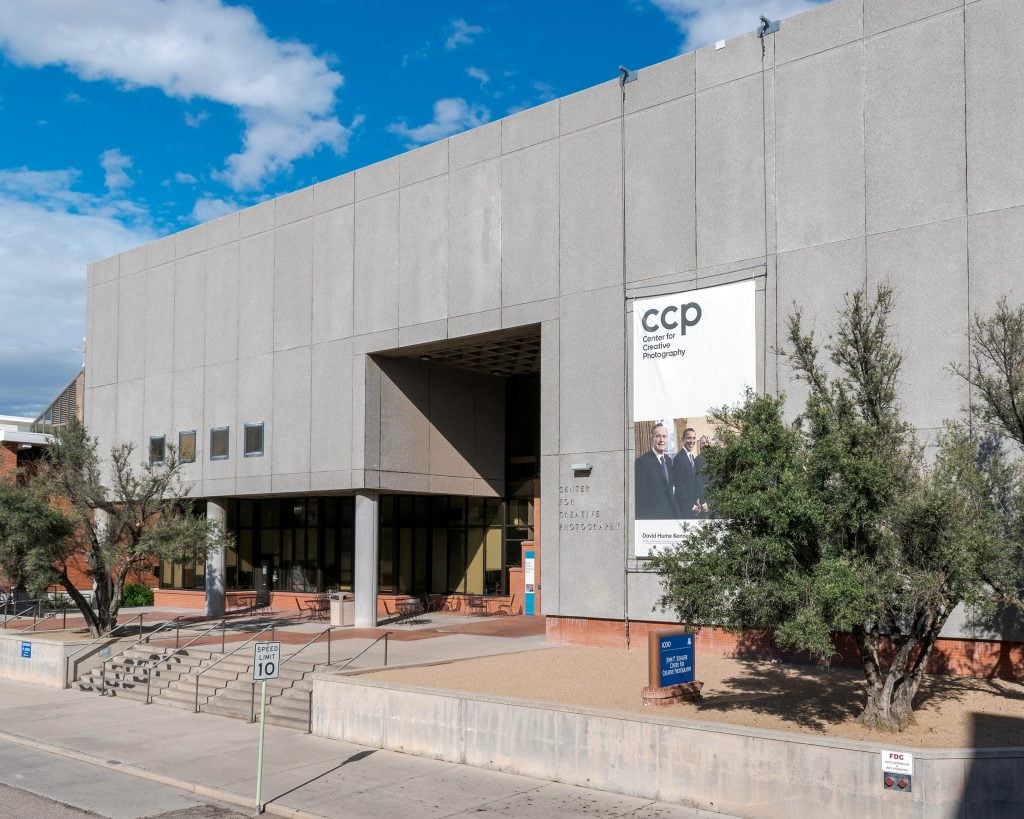
The facade of the Center for Creative Photography.
A failure to address similar concerns has caused an uproar at the Center for Creative Photography (CCP) in Arizona, where nearly a fifth of all employees resigned over the past year. Departing staff have accused the center’s director, Anne Breckenridge Barrett, of creating a hostile work environment where their complaints of racism, exploitation, and retaliation were ignored. (Unlike other organizations in this article, CCP is not a nonprofit, but instead a department of the College of Fine Arts at the University of Arizona.)
Barrett did not respond to the allegations, and a university spokeswoman described the resignations as “a small amount of turnover” that is common.
“We take these allegations very seriously,” the spokeswoman added, “and the university has a number of reporting pathways committed to uncovering and resolving concerns employees have about their employment.”
But with staff leaving virtually every department in the past year—and many of the remaining employees requesting the university intervene—Breckenridge faces significant obstacles in stabilizing the organization.
***
The combination of inexperienced board members and little oversight at small nonprofits can result in mismanagement behind the scenes, some experts said. Such issues can become heightened when the nonprofit’s leaders, like Hoone, are well-connected and lend desirable prestige.
Alongside his wife, the artist Carrie Mae Weems, Hoone has brought prominent artists through the university, where he remains director of a coalition of regional museums and art centers. During his four-decade tenure, Light Work has become one of New York’s preeminent arts incubators with exhibitions of artists like John Edmonds, Wendy Red Star, and Rotimi Fani-Kayode. Hoone also cultivated friendships with high-powered individuals like the philanthropist Robert Menschel, whose name is on the university media center where Light Work is housed.
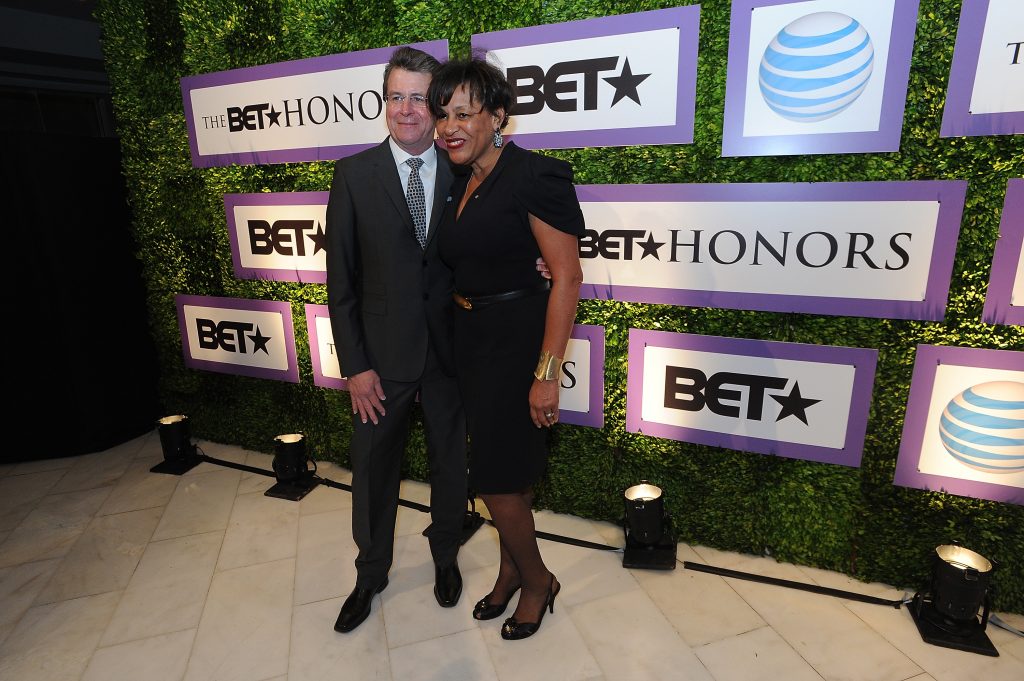
Jeffrey Hoone and Carrie May Weems are seen at BET Honors 2014. (Photo by Larry French/BET/Getty Images for BET)
Syracuse University’s human resources department launched an investigation into allegations of toxic workplace culture in late 2020 and brought in the accounting firm Ernst & Young to conduct an audit of the nonprofit’s finances. After the investigations were complete, university officials spoke candidly with some staff about how the findings would make it difficult for Hoone to continue in his leadership roles. An administrator said in an email that, at the very least, Hoone would be removed from any supervisory duties. But that didn’t happen until after Artnet News requested comment for this story, leaving employees and board members who had spoken up feeling exposed by the university.
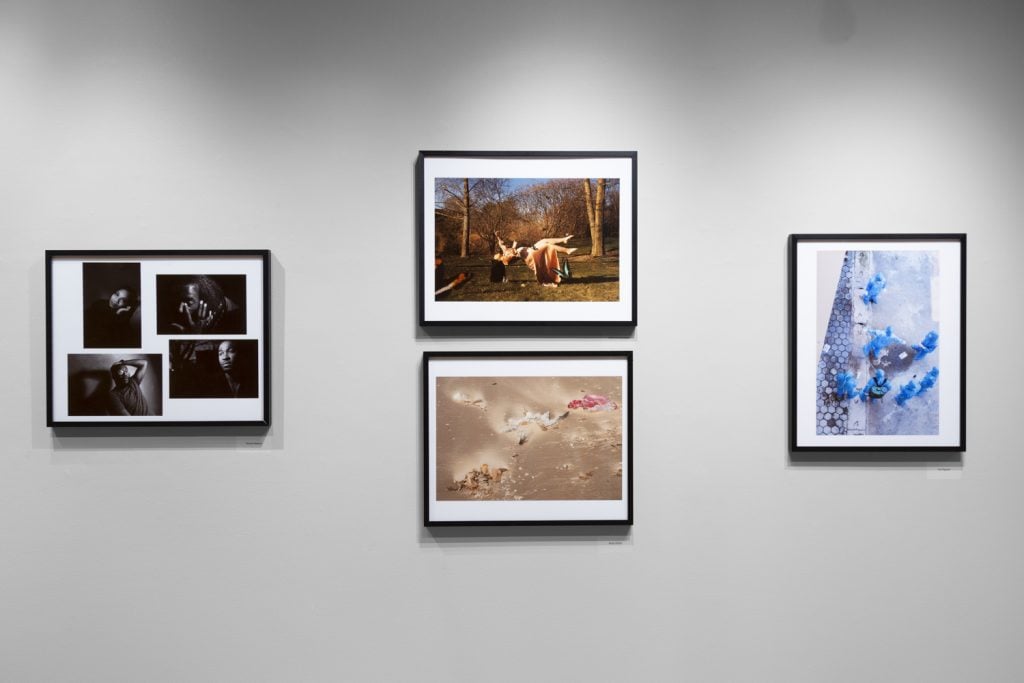
Installation view of “2021 Newhouse Photography Annual.” Courtesy of Light Work.
A Syracuse spokeswoman said that “the university took appropriate action based on the facts and circumstances as presented,” adding that it will “continue to do everything we can to make sure all our employees feel supported.”
The university declined to share copies of the investigations, but said that its audit revealed $41,000 in bonus payments to Hoone over the five-year period starting in 2015 and resulted in no finding related to expenses for gas or satellite radio expenses. (Goodlin and Jayawardane maintain that Hoone’s bonus payments were far more substantial than the audit found, based on their knowledge of internal financial documents.)
Hoone rejected other claims of diversity and equity issues, saying that these allegations were made by “disgruntled employees and disgruntled board members.”
But for whistleblowers like Jayawardane, the difficult environment that she said Hoone fostered at Syracuse stuck with her. She resigned before the investigation was complete in August, sending a letter that cited Hoone’s expenditures and unwillingness to connect employees with the donors he courted as reasons for concern. Two other women also left the board, as did a longtime director and a board member who served as the institution’s treasurer.

John Baldessari, Money (with Space Between), (1991) courtesy Gemini G.E.L.© John Baldessari.
“I was truly shocked when I first learned of Hoone’s unilateral decision to give himself substantial bonuses, as well as a slew of other amenities that drained directly from grant and donor money intended to support artists,” Jayawardane wrote in her resignation letter, citing other issues like the staff’s whiteness and pay inequalities.
Around when the investigations were completed in November 2020, Goodlin motioned to fire Hoone; instead, the remaining all-male board members voted to remove her. “I’m ashamed that I didn’t do something sooner,” said Goodlin. “The ethical implications are huge and they reflect on the university and organization.”
***
Some employees at Light Work believed that Hoone had become too comfortable in his position at the nonprofit over the last four decades, which resulted in what they described as micromanaging and public outbursts. Staff at the Center for Creative Photography, however, believed their director suffered from a different issue—one that employees say is common to varying degrees at small institutions: Barrett often avoided taking action on or responsibility for complaints about diversity and equity.
In an email announcing his resignation in May, Brian Ganter, a longtime program manager and the third junior staff remember to resign in as many weeks, wrote: “My concerns stem from years of experiencing harmful policies and leadership practices that have resulted in an unsafe and inequitable work environment.”
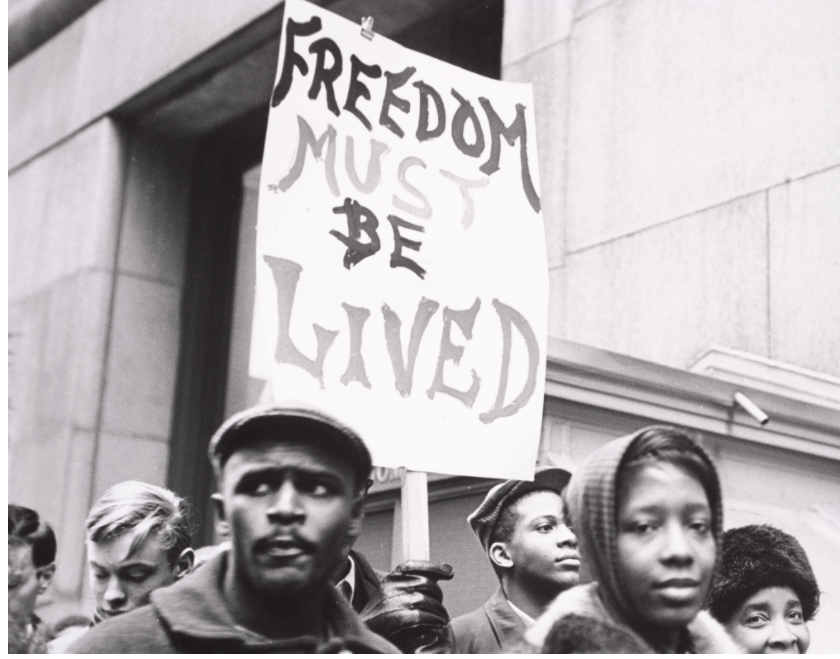
Chicago School Boycott, 1963-64 (from the series “That May Affect Their Hearts and Minds,” 1963-64), 1963-1964, © Center for Creative Photography, Arizona Board of Regents, Marion Palfi Archive/Gift of the Menninger Foundation and Martin Magner, The Center for Creative Photography.
The center opened in 1975 following a conversation between the photographer Ansel Adams and the University of Arizona, which runs the organization. More than two dozen employees oversee its archive, which includes 270 collections from artists like Adams, Harry Callahan, and Aaron Siskind.
Interviews with six current and former employees repeated the allegations listed in Ganter’s letter. Employees said that Barrett made inappropriate comments about the sexuality and race of staff members during the nonprofit’s holiday party. They also recalled a July 2019 meeting when the director invited a human resources official to discuss diversity at the center who instead lectured them on the ethics of accepting Sackler money. Disturbed by the meeting, several employees created a diversity committee of their own to help improve the center’s demographics, which are predominantly white.
“Efforts to diversify the collection were very surface level and not thoughtful,” said Deidre Thompson, a Black woman who worked as the center’s librarian until she resigned in 2019. “There were plans to add artists of color to the collection, but no plans to add any literature about them to the library.”
Other employees said that the center had manipulated the timing of its acquisitions to make it appear as though it was diversifying its collection when many of the photographs accepted from white photographers were simply moved to the next year. (Some affiliated with CCP later disputed this characterization.)
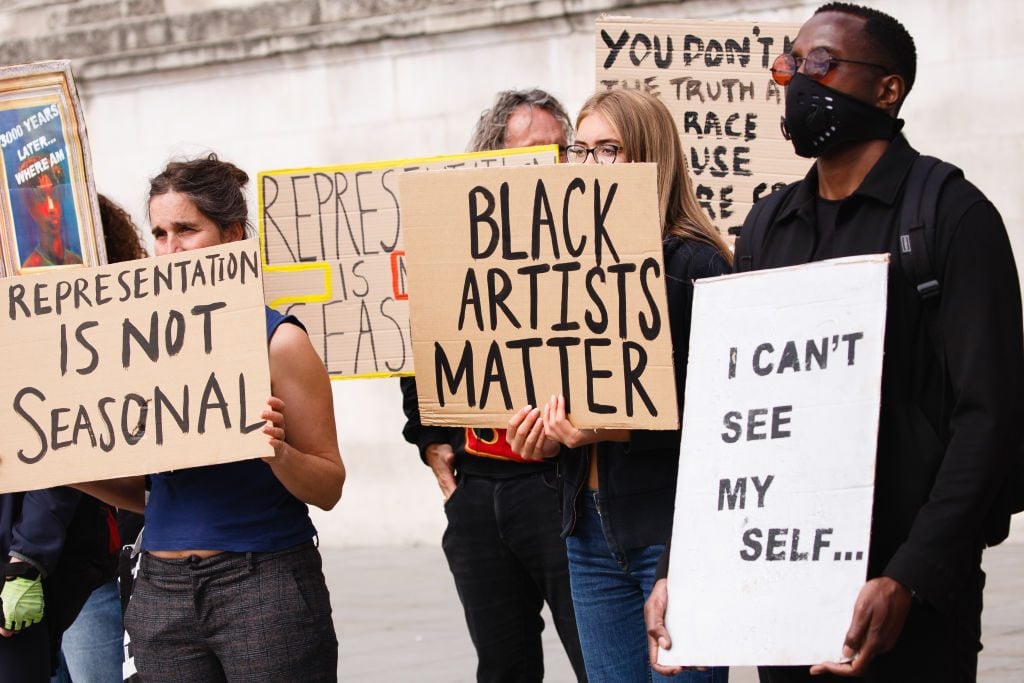
Black Lives Matter activists calling for equal representation for the works of black artists in British museums, galleries and national institutions. Photo by David Cliff/NurPhoto via Getty Images.
A university spokeswoman did not respond directly to allegations of racism at the center, but said that there are a number of pathways for uncovering and resolving employee concerns. After he submitted his resignation in May, Ganter said that the university informed him that it had finally started investigating allegations against Barrett.
But some current and former employees remain concerned that the university is not doing enough to ensure the wellbeing of center staff, and that problems will persist without proper intervention from school officials.
“It was the most toxic workplace that I have experienced,” said Lenox Wiese, an archivist who recently left the center. “A curator told staff that she didn’t think photography was for people who needed to ride the bus. That’s when I realized that I couldn’t work with people whose core beliefs about who can access art are so fundamentally different from mine.”
